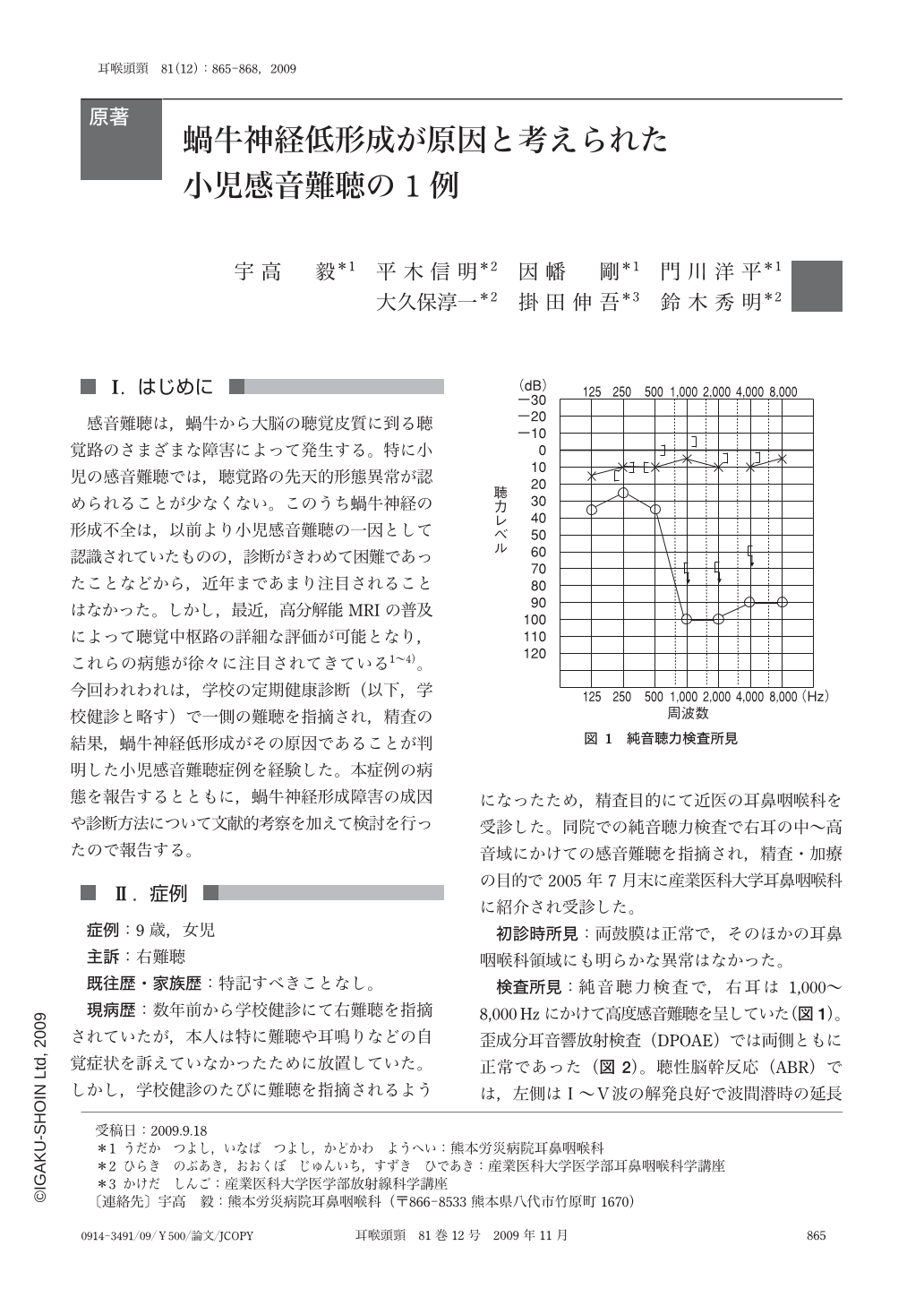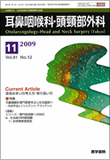Japanese
English
- 有料閲覧
- Abstract 文献概要
- 1ページ目 Look Inside
- 参考文献 Reference
Ⅰ.はじめに
感音難聴は,蝸牛から大脳の聴覚皮質に到る聴覚路のさまざまな障害によって発生する。特に小児の感音難聴では,聴覚路の先天的形態異常が認められることが少なくない。このうち蝸牛神経の形成不全は,以前より小児感音難聴の一因として認識されていたものの,診断がきわめて困難であったことなどから,近年まであまり注目されることはなかった。しかし,最近,高分解能MRIの普及によって聴覚中枢路の詳細な評価が可能となり,これらの病態が徐々に注目されてきている1~4)。今回われわれは,学校の定期健康診断(以下,学校健診と略す)で一側の難聴を指摘され,精査の結果,蝸牛神経低形成がその原因であることが判明した小児感音難聴症例を経験した。本症例の病態を報告するとともに,蝸牛神経形成障害の成因や診断方法について文献的考察を加えて検討を行ったので報告する。
A 9-year-old girl presented with sensorineural hearing loss(SNHL)due to cochlear nerve hypoplasia. Pure tone audiogram showed severe SNHL in mid to high frequency tones in right ear. Distortion-product otoacoustic emissions and caloric responses were normal in both sides,whereas auditory brainstem response was abolished in the affected side. No morphological abnormality of the inner ear or internal auditory canal was found on computed tomography,while high-resolution magnetic resonance imaging clearly revealed hypoplasia of the right cochlear nerve. She was diagnosed as type 2B cochlear nerve hypoplasia according to the classification by Casselman. Although this anomaly is currently rare,advance of imaging technology will be increasing a chance to encounter such cases.

Copyright © 2009, Igaku-Shoin Ltd. All rights reserved.


